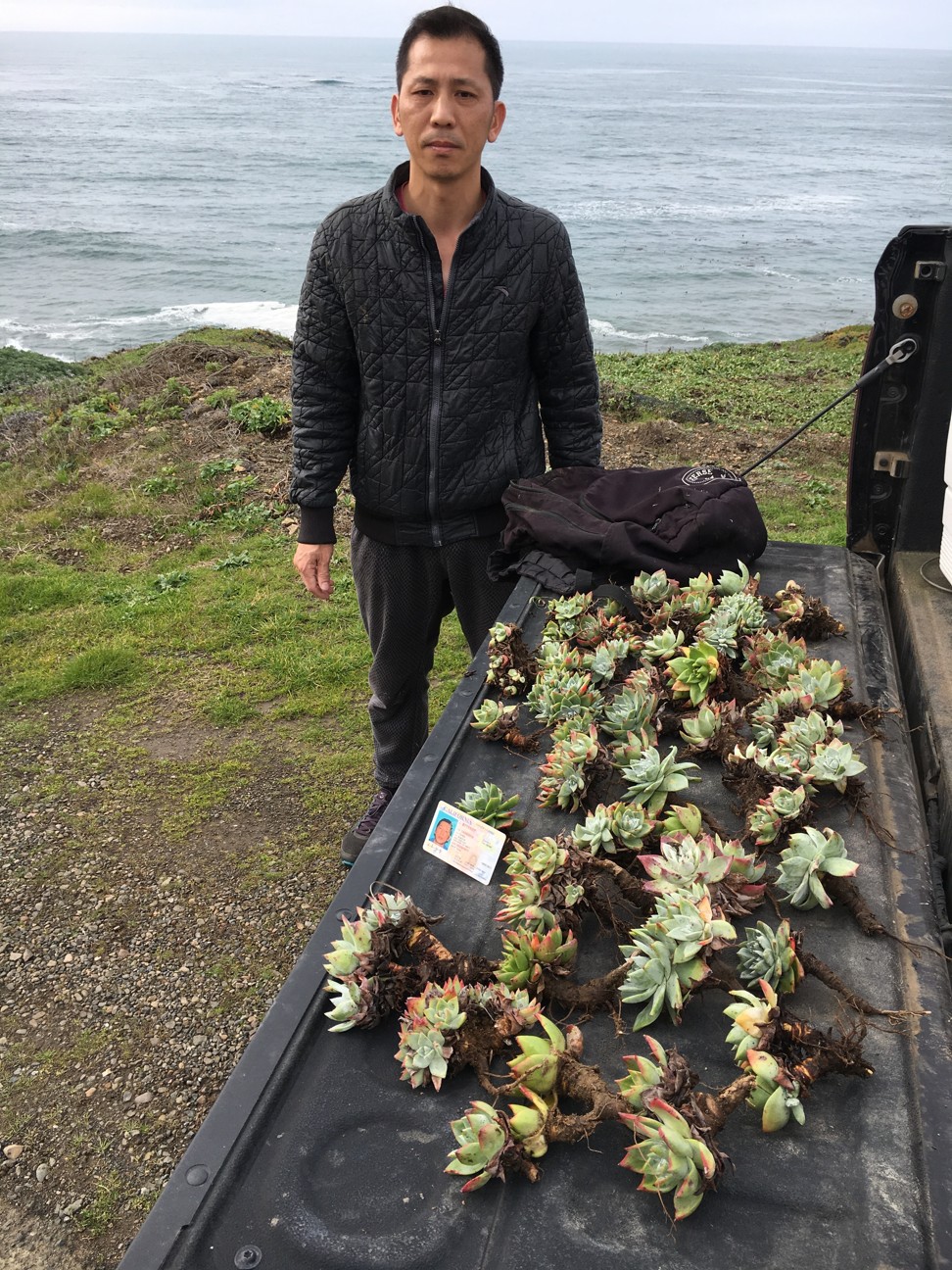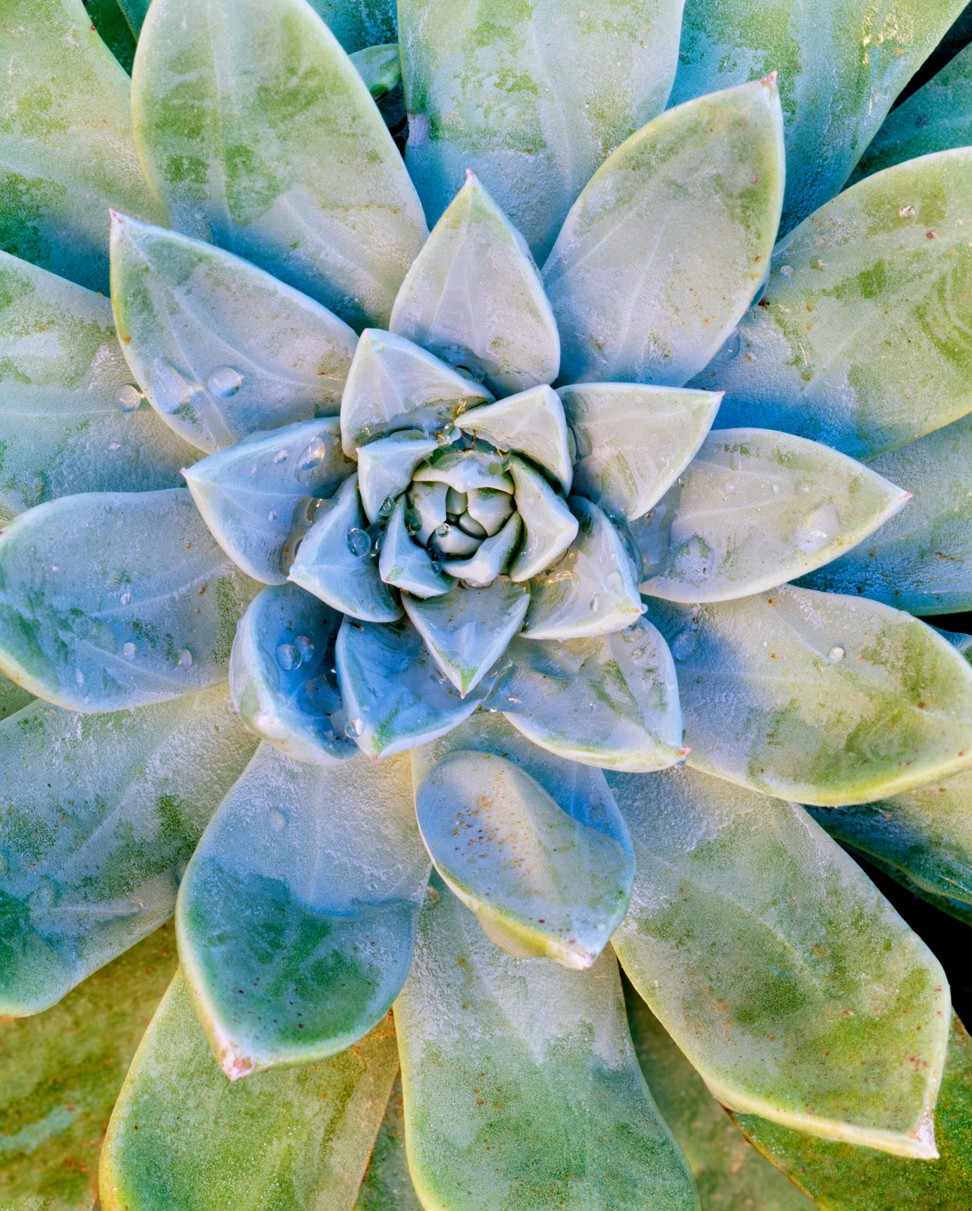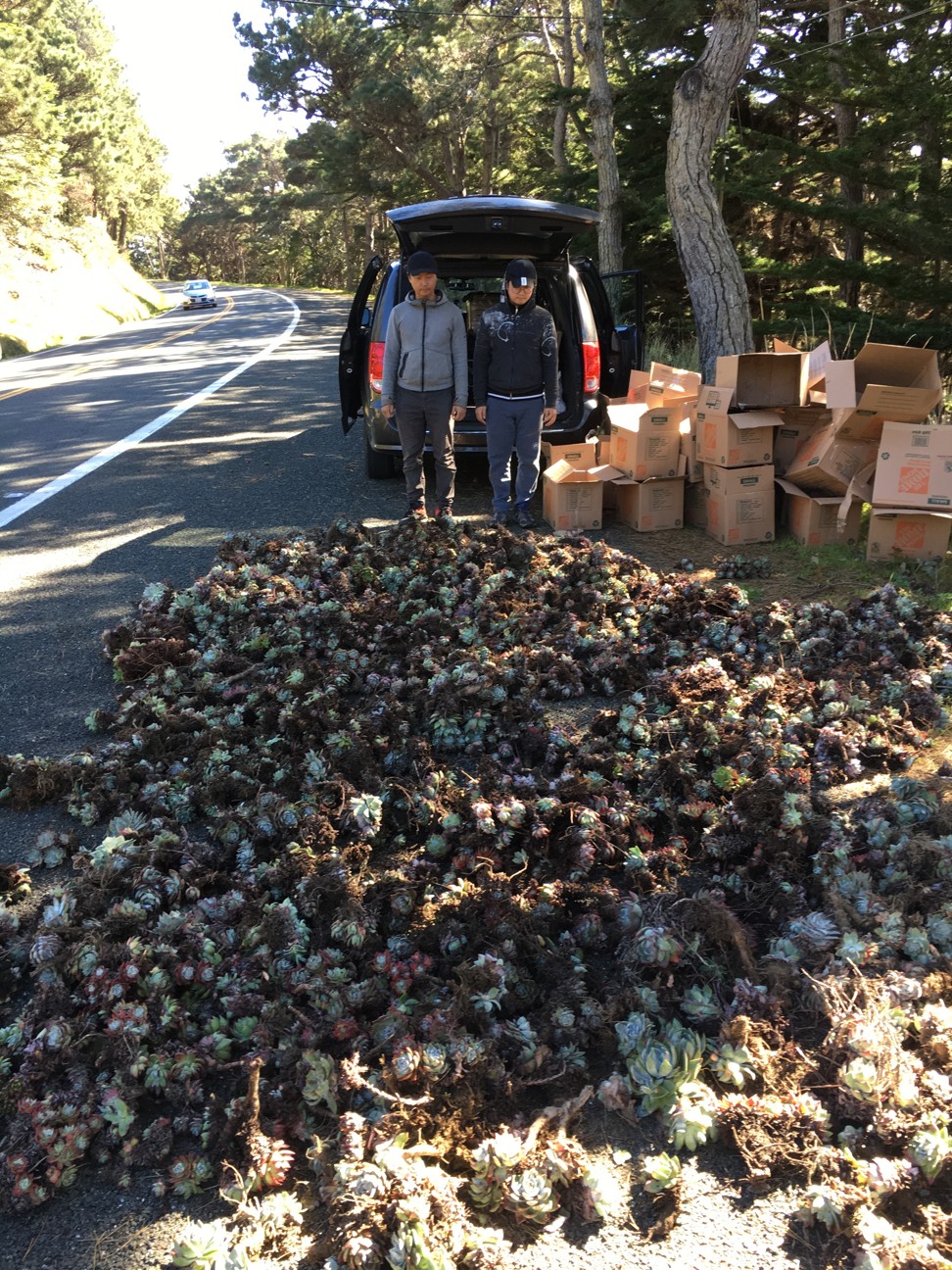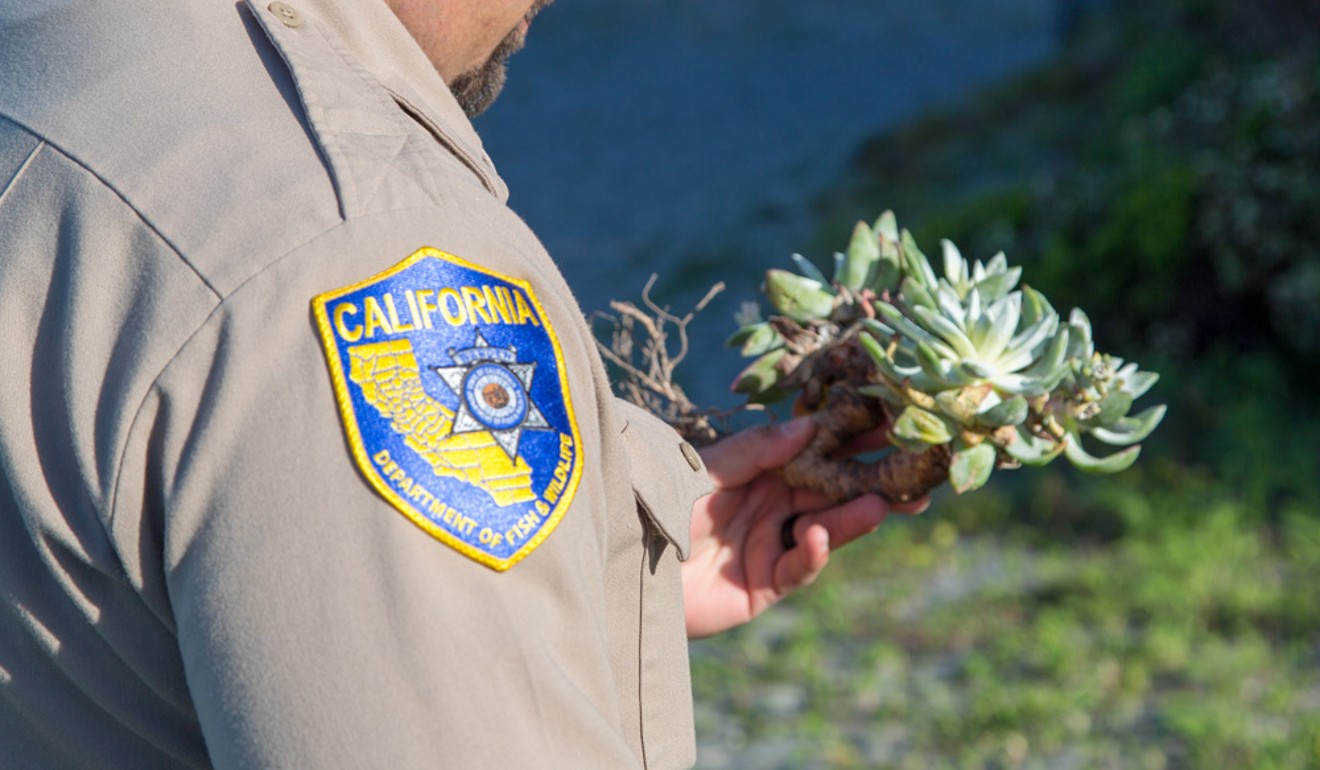
California’s succulent smugglers: plant poachers seed Asia’s desire for dudleya
The current craze for hardy succulents, which started in South Korea and spread to China, has resulted in organised gangs stripping the US state of a plant crucial to its fragile coastal ecosystem
Last December, Patrick Freeling, a game warden with the California Department of Fish and Wildlife (CDFW), was in his office in Mendocino County when his phone rang. No one back then, not the anonymous caller and certainly not Freeling, could have imagined the events that phone call would set in motion: not the arrests, the court cases, the undercover agents pressed into service prowling California’s coastline. In less than six months, international poaching rings stretching to South Korea and China would be exposed – operations that, prior to that phone call, no one knew existed.
The woman on the phone had been annoyed. Earlier that day, while visiting the post office, she had found herself stuck in line behind a man sending 60 packages to China. As curious as she was peeved by the inconvenience, she asked what he was shipping so much of. He raised a finger to his lips with a conspiratorial “Shhhhh!” and said it was something “very valuable”. When she asked where he got the items, the man pointed towards the sea.
Prized Haworthia plants stolen and ‘sent to China’
Being from Mendocino, the woman knew she should be on the lookout for poachers. Illegal divers, pilfering abalone for sale in Asia, had become a scourge up and down the coast. And she knew exactly what to do. She called the CDFW.
Had somebody else picked up the phone, the story would likely have ended there, but she got through to Freeling, a dogged investigator and passionate conservationist. Although poachers were not in the habit of sending shellfish in unrefrigerated boxes through the post, Freeling contacted United States Customs and Border Protection, who seized and X-rayed the boxes. What they discovered confounded everyone.
The boxes were packed with dudleya, plucky little succulent plants common to Northern California’s coastal cliffs. Each had been carefully wrapped for replanting. dudleya poaching was not unheard of in 2017. A tractor-trailer had been discovered in Baja California, Mexico, filled with 4,746 plants. But those were dudleya of an especially rare variety, found only on one small island.

No bigger than a baseball, the dudleya in Mendocino were relatively common, not just in nature but in nurseries, where they grow easily. Who would need 60 boxes of dudleya? What were they for?
It was a mystery, leaving Freeling more puzzled than concerned, until he received another call: an Asian man had been seen stuffing plants into a backpack along a coastal cliff. Freeling rushed to the area and came face to face with the man. There were 50 dudleya in his backpack.
“I confronted him and asked what he was doing, and he said it was for his garden. He had another person as a lookout,” says Freeling. “This was my first time dealing with plant poaching and I didn’t know what I was doing, and I didn’t search his vehicle for more plants. I believe now that there were more.”
Later, Freeling’s instincts kicked in: he had stumbled onto something big. “That’s the first time I started alerting everyone that something was going on,” he says. Few, however, were willing to listen.
Four arrested as customs officers seize HK$1.9 million in dried abalone
Dudleya is a plant genus containing more than 45 species of succulent. “Dudleya are native to the west coast of North America, from Oregon to Baja California, with a couple of species in Arizona, one of which also grows in Nevada and Utah,” says Stephen McCabe, emeritus director of research at the Arboretum at the University of California, Santa Cruz. “Some are common and a great number of the species are rare.”
The more rare the plant the more covetous the collector, and some dudleya are extremely scarce indeed. “A few of the rarest species could be devastated or driven to extinction in a day or two,” says McCabe.
It was perplexing, then, that the plants targeted by poachers in Northern California were so commonly found. But while Dudleya farinosa – also known as “bluff lettuce”, “powdery liveforever” (owing to the leaves’ dusty appearance) or simply “liveforever” – may be unexceptional, the squat plants boast a geometric beauty reminiscent to some of the blossom of a lotus flower. In bloom, they sprout proud stalks, decked in clusters of small yellow flowers.

And dudleya, it is argued, have character, surviving – even flourishing – in some of California’s least hospitable environments. They earned the moniker “liveforever” due to their ability to survive, in the right conditions, for more than a year with no fresh water, and dudleya sprout from rocky seaside cliffs, hanging on while battered by extreme weather and waves, so helping to secure the cliffs against erosion.
What’s more, they are vital to California’s delicate coastal ecosystem.
“Bees, flies, hummingbirds, butterflies, bumblebees, swallowtails and other creatures have been observed visiting the flowers,” explains McCabe, which are in turn eaten by birds. Mice, rabbits, deer and probably rats eat various plant parts. In some of the places where they occur, the dudleya are almost the only species of flowering plant present, but there are many insects around, so they are integral parts of some small or tiny ecosystems.”
Still, dudleya did not seem a realistic candidate for theft, and they are delicate when taken from their natural environment. “D. farinosa, may grow in special greenhouses … but a great portion of them will die as house plants,” says McCabe. “They are very susceptible to fungus problems if it’s both hot and humid at the same time, particularly in summer. This means they are not well suited to the southeastern US and to the warm, humid parts of Asia.”
And they are especially unsuited for travel. “A day in a plastic bag in a hot car will do them,” McCabe adds.
Why greenery is in for interior decor in 2018, and how to pick plants
Freeling had a hunch that something big was afoot, but his colleagues dismissed the episode as simply the oddball antics of a few plant-loving eccentrics. Everyone knew that succulents were a hot trend in the US. Potted succulents had become de rigueur house-warming gifts and Instagram was awash with close-ups of the plants. Memes such as “millennial interior design bingo” inevitably featured succulents front and centre. But while complaints from suburban US homeowners that plants in their front gardens had been pilfered were increasingly commonplace, the succulent trend had not led to widespread poaching. Nurseries did brisk business in the US, but the consumer base was no more than the market could bear.
Had Freeling’s colleagues been aware of lifestyle trends in South Korea, 9,000km away, on the other side of the Pacific, they might have been more worried. In the Asian country, tending succulents had become a favourite pastime across generations, popular with everyone from harassed housewives to Generation-Z hipsters. And with all things Korean – from fashion and music to food and soap operas – grabbing the popular imagination in China, the world’s most populous nation had caught a massive dose of dudleya fever.
“The species apparently most poached over the last year is a fairly common species, but it has environmental limitations – only growing within a short distance of the coast” says McCabe. “Given the market size in Asia, the rate of poaching, and the fact that the oldest plants are being taken, even this common species may be in trouble.”
When this first happened, when I was raising the flag saying this could be the next abalone, the next big deal, I wasn’t getting a lot of love from my colleagues. It was more, ‘These are plants. So what?
Freeling’s colleagues, however, did not see a few isolated incidents of plant smuggling as an early sign of a growing problem.
“When this first happened, when I was raising the flag saying this could be the next abalone, the next big deal, I wasn’t getting a lot of love from my colleagues,” Freeling says. “It was more, ‘These are plants. So what?’”
That dismissive attitude would change, however, and fast.
“A couple of months later, I caught two guys with 850 plants and 1,400 rosettes in a van,” says Freeling. “They had paperwork for vendors all over the world. These people are global exotic plant vendors. I’d guess they’re not just in dudleyas but carnivorous plants deep in the jungle in Sumatra. Then, after that, came Humboldt.”

The bust that occurred in Humboldt County, just north of Mendocino, in April, also had its origins in a post office. For nearly a year, US Customs and US Postal Service workers had noticed suspicious packages passing through a post office in Trinidad, Humboldt County, and heading to Asia, some leaking soil. They opened one box and discovered a cache of dudleya, sharing the sender’s address and personal information with the CDFW. A full-scale undercover investigation began, among the first of its kind for plant poaching in California.
In April, CDFW officers pulled over the sender’s rented van to discover more than 1,300 dudleya in the back. Wildlife agents, on raiding his Trinidad cabin, discovered more poachers, 1,000 dudleya being prepared for shipment to Asia and US$10,000 in cash.
Three men, Koreans Taehun Kim, 52, and Taeyun Kim, 46, and Liu Fengxia, 37, from China, were arrested. In June, all three pleaded guilty to two felonies (conspiracy and false filings with the government) and misdemeanours including removal of plant material from public lands and commercial sales of plants removed from public lands.
Each was fined US$10,000 and given three years and eight months in state prison – sentences that the judge suspended on “the conditions that the defendants are prohibited from entering the United States without prior authorization of the federal government and state courts, and prohibited from entering any local, state or national park”. The trio also forfeited the cash they were found with, which will be used for dudleya conservation in Humboldt.

“For a lot of folks, this was an eye-opener,” says Michael G. van Hattem, senior environmental scientist specialist at the Eureka field office of the CDFW in the county. “Since I’ve always had an interest in succulents on a personal level, it was shocking to me. These plants probably can’t handle much pressure. Any real collecting effort would get rid of them. I despise poachers … I thought, ‘Jeez, here we go!’ Abalone is such a big deal and what came to mind immediately is that the poachers have switched.”
Media coverage of the bust galvanised Californians and law enforcement. With the news that a single dudleya could fetch anywhere from US$15 to US$50, the scale of the problem became clear.
In May, plant enthusiast Jade Davis and her family were returning to their home in Carmel Valley from a day trip to Big Sur, in California’s Monterey County. She had pulled over to the side of the Pacific Coast Highway when she spotted two people loading succulents into a van.
Having read reports of poaching in local newspapers, Davis sprang into action, taking pictures of the pair and taking down the van’s registration number. She called the sheriff who, in turn, alerted the CDFW. The thieves were apprehended in Palmdale, a suburb of Los Angeles, where hundreds of plants were found. Alarmingly, as well as Dudleya farinosa, other species were present, and the poachers were operating from an area far removed from the plants’ natural habitat. The scope and complexity of the illegal enterprise was now apparent.
If someone so much as bats an eye or looks hinky, we’re getting phone calls and we’re getting tips. It’s like we have a huge police force out there. I’ve never seen anything like this with any other species
Since then, law enforcement agencies have ramped up their operations, with cooperation across state and federal agencies, and arrests continue to be made. One group infiltrated by the CDFW is known to have harvested more than 10,000 plants, with an estimated value of US$700,000, in 2017 and 2018 alone. The group was also active in 2015 and 2016. Another gang was found with 27,403 plants, worth about US$1.9 million.
To put this into perspective, the poachers originally discovered by Freeling were found with 850 plants with an estimated value of US$59,500, and 50 plants with an estimated value of US$3,500. They are expected to be indicted this month. And as recently as September 1, according to a CDFW source, ethnically Chinese succulent poachers were apprehended in California.
While the CDFW, law-enforcement agencies and even the US Postal Service have played important roles in catching dudleya smugglers, and all are quietly continuing their work, surveilling poachers and building cases, an unsung hero of the story has been the California Native Plant Society.
“The native plant community has an insane number of plant enthusiasts who are affected by this,” says Freeling.
Indeed, with 35 chapters covering the state, the society has people everywhere. The NGO is, according to its website, “dedicated to celebrating California’s native plant heritage and preserving it for future generations”.
“If someone so much as bats an eye or looks hinky, we’re getting phone calls and we’re getting tips,” says Freeling. “It’s like we have a huge police force out there. I’ve never seen anything like this with any other species. People are very into it and they’re very upset about it.
“We have pretty good warden coverage and then, when you supplement it with all of the enthusiasts and all the other agencies, it’s huge. There’s a lot of people looking in a lot of different places.”
Dudleya poaching really makes no sense to me because they’d be cheap to buy direct from nurseries in China. Shipping alone may cost more than what they’re worth
Furthermore, officials in California are hopeful that poaching may eventually stop when the trend for dudleya passes. And, Asian nursery owners suggest that they may now be meeting some of the demand.
Sean Man Kin-shun runs Wah King Garden Arts in Hong Kong, a plant wholesaler and nursery founded and owned by his father. The company has seven retail locations in the city, with most of its inventory grown in mainland China. Man says Wah King cultivates as many as 40 succulent species at any one time, and between 5,000 and 10,000 plants of each, including “many if not most types of dudleya”.
“We grow hundreds of thousands of these ourselves and they are very common here,” Man says. “Dudleya poaching really makes no sense to me because they’d be cheap to buy direct from nurseries in China. Shipping alone may cost more than what they’re worth.”
And in some good news for California’s dudleya, business is taking a hit.
“There are too many growers in China nowadays,” says Man, “and they mark the price down by a lot.”
While that may sound positive, in California, a degree of ecological damage has already been done, and landscape repair is needed. Again, the California Native Plant Society has stepped up to the plate. When tasked with replanting the nearly 2,000 plants confiscated from poachers in Humboldt, it was to the NGO that van Hattem turned.
“I called up four or five people from the Native Plant Society and said bring some good people, botanists preferably,” he says. “Together we rounded up 31 people. It was Friday when I made the calls. Monday we received the plants, and Tuesday we replanted.”

For his part, tenacious Freeling, who recognised a potential environmental catastrophe when nobody else did, believes something positive has come from the troubling episode.
“For me, the coolest thing about this whole plant deal is the fact that, for the first time in my career as an officer, we have multiple agencies working together in concert to tackle a problem, along with a huge community of botanists and enthusiasts,” he says. “That huge replant in Humboldt, nothing like that has ever been done. We have multiple state and federal agencies all working together. It’s beautiful.”
And the appeal of the Dudleya farinosa – the humble “bluff lettuce”, the defiantly robust “powdery liveforever” – remains strong. Even the wardens tasked with protecting them have not been immune to their modest charms.
“Prior to this, I was a plant moron,” Freeling says. “But since this has all happened, I’ve been around succulents so much that I’ve started acquiring them. I think they’re cool, they’re neat. They’re easy to maintain, they’re cheap and I have a lot of them, just like those Korean housewives.”
Listen to a selection of Post Magazine stories, read by us:

